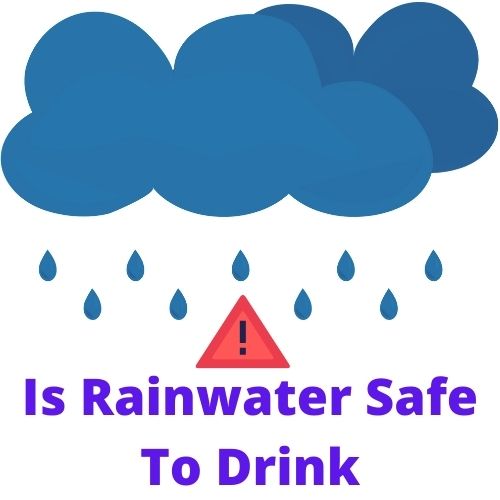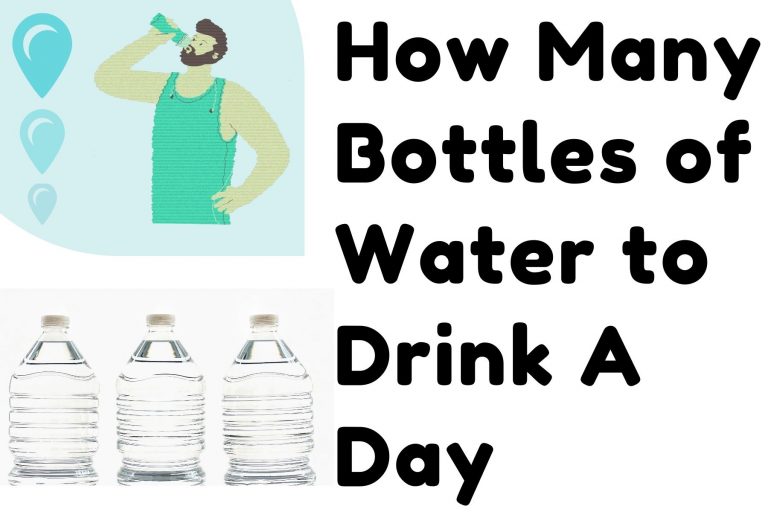How To Filter Rainwater For Drinking (Best methods towards clean drinking water)

Our world is facing lots of weather problems due to rapid climate changes. Overpopulated and urbanized cities in some regions contribute to reducing groundwater. Experts are combing options for alternative sources of water. Hence harvesting rainwater comes as one of the best options in order to lessen the pressure on groundwater. But how to filter rainwater for drinking?
Is rainwater safe to drink? We’ve discussed it in another article with a detailed explanation. Though rainwater is utterly pure, it has a great chance of being contaminated. Here we’ll know how to filter rainwater for drinking and showering. If you want to bypass the hectic system of filtering rainwater, you’ll get answers on how to drink rainwater clean and fresh and how much to drink.
Our world is going through some of the worst crises of the centuries. Climate change is one of them that threatens our existence in the long run. As usual, people understand when they start to suffer. Till then, they remain careless enough to contribute to their upcoming sufferings. Climate change poses a significant threat to the sources of fresh water. We need to consolidate a proper strategy to meet the demand for clean water.
Hence rainwater comes in handy if properly utilized. You can collect approximately 550 gallons of rainwater per 1000 square feet of collection surface for every inch of rain. And that’s a massive amount of rainwater to meet the demand of many people. If a higher authority handles the filtration system, people can have fresh and delicious rainwater with less hassle. You can run the rainwater filtering individually, hence our puny efforts to let you know how to filter rainwater for drinking.
However, the scenario has changed a lot due to increased pollution and contamination of air. If you date back to the 18th century, you’ll find the air quality at the time the best and the cleanest. At that time, heavy industries were less in number. Children used to play outside in the rain and gape open their mouths to drink it directly. People can store the rainwater in a clear container to drink in everyday life.
That’s enough chitchat for now. If you want to be confident about drinking rainwater, you may filter it through some efficient system. Let’s explore the best rainwater filtration systems for large and small scales. So how to filter rainwater for drinking? Let’s jump into your desired section.
What To Consider Before Filtering Rainwater For Drinking
A rainwater filter system isn’t enough to keep your drinking water free of contamination or pollution. You should include some pre-filtration measures to ensure broader filtration of drinking water. The enormous amount of debris and green in the rainwater will create problems for the lifetime of the filtration system.
To keep the water filtration system efficient, you must prepare a proper catchment surface and organize the rendering processes. Here are some checklists before you render rainwater through the best rainwater filtration processes.
- Your roof should be pre-painted. If the roof is made of corrugated metal, it’ll produce the best result for rainwater harvesting.
- A galvanized seamless gutter will efficiently carry the water into the downpipes and collect the debris in a specific part. Cleaning the gutter after six months is good enough.
- Downspouts help carry the rainwater into the tank. So it should be organized in a systematic way to render rainwater straight into the tank. Plastic downspouts work well, whereas metallic ones may tarnish soon.
- Installing a prefilter system will reduce the pressure on the filtration system. It’ll filter larger debris in bulk. Panty hose and leaf guards are among the best additional measures to provide fresh rainwater into the tank. I personally prefer leaf guards as a prefilter.
- To cover many household works using rainwater, you need to select a tank according to your workload. Lots of rubbish sediments at the bottom of the tank after some months. So it would be best if you cleared up these things regularly to keep the best rainwater filtration system efficient.
How To Filter Rainwater For Drinking At Large Scale
You can filter rainwater at a large scale and small scale at home. According to your need, you can select the rainwater filtration system.
Here are some of the best rainwater filter systems you can use for a community. The authority can adopt any of these filtration systems depending on their demand, efficiency, budget, advantages, or disadvantages. However, they’re best for the large-scale use of rainwater.
1. Storage- A natural filtration system for rainwater
How do you naturally filter rainwater? Storage ensures a clean reserve of rainwater from which further pollution is prevented. Though it doesn’t purify rainwater cent percent, it reduces a considerable amount of water pollution. This natural rainwater filtration can be observed from 3 points of view:
A. Physical
Keep the rainwater stagnant for 24 hours, and gravity will settle about 90% of the suspended impurities. The rainwater becomes clearer when the impurities sediment at the bottom.
B. Chemical
Aerobic bacteria oxidize the ammonia complex and organic substances with the help of dissolved oxygen in the rainwater. It reduces the organic matter pollution to a significant amount.
C. Biological
Pathogenic organisms like bacteria tremendously decrease in number during the storage process. They gradually die out if the rainwater is left still for 10-14 days. However, storing it for a more extended period will impart a foul smell due to the growth of algae.
2. Filtration
The filtration process is more efficient than most other processes. It can remove 98-99% bacteria. Usually, there are two types of rainwater filtration systems.
A. Slow Sand Filters
It’s a mega process that requires a large space, about 1500 square meters. This filtration process is also known as a biological filter which consists of-
- Supernatant water
- A bed of graded sand
- An under-drainage system
- A system of filter control valves
The system doesn’t need highly skilled laborers, and this system can filter 2-3 million gallons per acre per day. However, you can expect fair color and low to nil turbidity in the filtrated rainwater. But the most beautiful part is its bacterial removal rate of 99.9-99.99%.
B. Rapid Sand Filters
This filtration system is highly efficient for a small community. A rapid Sand filter is also known as a mechanical filter which is of two types.
- Gravity type (e.g., Paterson’s filter)
- Pressure type (e.g., Candy’s filter)
You can install this rainwater filtration system in a small area of about 80-90% square meters. A rapid sand filter can filtrate about 200 million gallons per acre per day which is way higher than the slow sand filter. Only highly skilled persons can handle the operation and make it a successful one. It removes turbidity and offers a good color to the rainwater. The bacterial removal rate is 98-99% in a rapid sand filter.
3. Disinfection
At large scale, three methods of rainwater treatment systems are most used.
1. Chlorination
Chlorine is one of the most incredible advances in the water purification system. It not only kills bacteria, pathogenic spores, certain viruses but also oxidizes iron, manganese, and sulfide in the rainwater. Chlorination controls the algae production in water and destroys the foul odor-producing constituents.
You can use chlorine gas, chloramines, and perchlorate to chlorinate water at a large scale.
2. Ozonation
The ozonation process is an energy-consuming water treatment process. It needs a high voltage current or ultraviolet rays to function. It oxidizes manganese, iron, sulfur and converts them into metallic rust which is later filtrated through the filtration system.
3. UV Radiation
UV water filtration system is highly effective in treating your impure rainwater. It eliminates all the pathogenic particles, including viruses, bacteria, spores, etc. But UV radiation treatment requires electricity supply, and the price is significantly high for the average Joe.
How To Treat Rainwater For Drinking At Home
You can filter rainwater on an individual or domestic scale through these rainwater treatment systems. Choose the best water treatment system according to your need, budget, efficiency, and availability.
1. Boiling
Boiling is one of the most common water filtration systems that has been practiced for ages. It’s highly efficient in the face of a sudden outbreak of water-borne diseases. You can practice the boiling method more often as it is quick and efficient, killing viruses, bacteria, spores, cysts, ova, and removing obnoxious gases. Though it eliminates temporary hardness, there’s no residual protection against it. To get the most effective result, you have to bring the water to a “rolling boil” for 10 to 20 minutes.
2. Chemical Disinfection
i. Bleaching powder
The most used proportion is 30-gram chlorinated lime or bleaching powder to treat 100 gallons of soft water.
ii. Chlorine solution
You can prepare chlorine solution from bleaching powder through a bit of tweak.
iii. Chlorine tablets (e.g., halozone)
You need only one tablet of 0.5 gm halozone to disinfect 20 liters of water. This process is highly used in flood-torn areas.
iv. High test hypochlorite
To disinfect 1L of water, you’ll need exactly 1 gm of High Test Hypochlorite or HTH. HTH is better than bleaching powder as it’s more stable and less deteriorating.
v. Alum
If you’re in a problem with muddy water, alum is the solution. Use 2-5 grams of alum for 1 gallon of water. It’ll remove the turbidity and give a fair color.
vi. Copper Sulfate
Copper sulfate prevents any organic growth like algae, vegetable in the rainwater. The recommended use is 0.1-0.25 ppm of water.
vii. Bromine
Bromine has been enormously helpful in the quick purification of rainwater. If you need to do it fast and faultlessly, mix 0.06 grams of bromine to sterilize 1 liter of water in only 5 minutes.
viii. Iodine
Use iodine in little doses. A dose of 2 parts per million of water is enough for a small amount of water.
ix. Nesfield tablets
A 2 gm Nesfield tablet is a powerful option to treat 4 gallons of water in just a few minutes. The formula includes iodine and iodate of sodium with a good proportion of citric acid.
x. Calcium oxide
A solution of 6 gm lime can sterilize a gallon of soft water within 5-24 hours.
xi. Potassium permanganate
Potassium permanganate is also used as a deodorant by oxidizing organic matters in rainwater. In a period of 4 to 6 hours, an amount of 0.5 parts in 100,000 parts of water can be treated.
3. Rainwater Filter Systems
Filtration processes include some of the best rainwater filter systems. However, they vary slightly in their efficiency. Some are better with soft water, and some are better with hard water. Here are some of the best water filtration systems available in the market.
i. Pasteur-Chamberland filter
ii. Berkefield filter
iii. Diatomite filter
iv. Metallic filter
4. Ultraviolet irradiation
5. Multi-stage Reverse Osmosis
The reverse osmosis process is yet the most advanced and efficient water filtration system. It can filter out almost all kinds of contaminants and pollutants in the rainwater. Even it can filter heavy metals like arsenic, lead, cobalt, and other suspended impurities. Various layers of this water filter system offer you delicious and freshwater to drink. You can enjoy the clean rainwater without plugging it into electricity. However, you need to change the filter regularly depending on your uses.
References:
Park’s Textbook of Preventive & Social Medicine/ 24th edition



